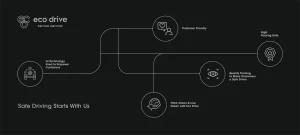3D Printing Technologies – A Fundamental Guide
2 min read
If you’re a tech enthusiast, you may be interested in learning about 3D printing technologies. These new methods are transforming many professions and industries. But many people still need to familiarize themselves with the technology. If you’re looking for a quick way to learn about 3D printing in Dubai, consider reading this 3D printing technologies guide. You can even use this information to determine which 3D printers are right for your home.
Material jetting is a 3D printing technology:
Material jetting is a 3D printing technique that combines fast print speeds with incredible accuracy. It can produce parts of a variety of different materials and colors. The process is also useful in manufacturing complex and intricate parts, including jewelry. Despite being a relatively new technology, it has already greatly impacted the world of additive manufacturing.
Material jetting is a 3D printing technique that uses multiple nozzles to deposit material. It produces highly accurate, smooth parts with high dimensional accuracy. It also produces parts with homogenous mechanical, thermal, and visual properties. It is particularly useful in manufacturing high-quality visual and haptic prototypes. Despite these advantages, Material jetting is not without its drawbacks. While the process is highly accurate, it has several limitations, including photosensitivity, degrading mechanical properties, and poor surface finish.
Fused deposition modeling:
Fused deposition modeling is one of the most common additive manufacturing processes today. It uses filaments of thermoplastic polymers to build components. The filaments are heated to a liquid state, extruded, and then resolidified. The process is extremely fast and inexpensive, and unlike other 3D printing technologies, it requires no chemical postprocessing to create the finished object.
Fused deposition modeling is a widely used additive manufacturing (AM) technology that produces complex parts with pleasing geometric properties. The process parameters must be optimized for this technology to be the most effective. These parameters include the temperature, the speed of the 3D printer, the infill density, and the build orientation.
Digital light processing (DLP):
In 3D printing, digital light processing (DLP) creates objects with photopolymer resin. Digital light processing uses a projector to cure photopolymer resin in layers, leaving some areas uncured while curing others. This process works similarly to Stereolithography but has some subtle differences.



